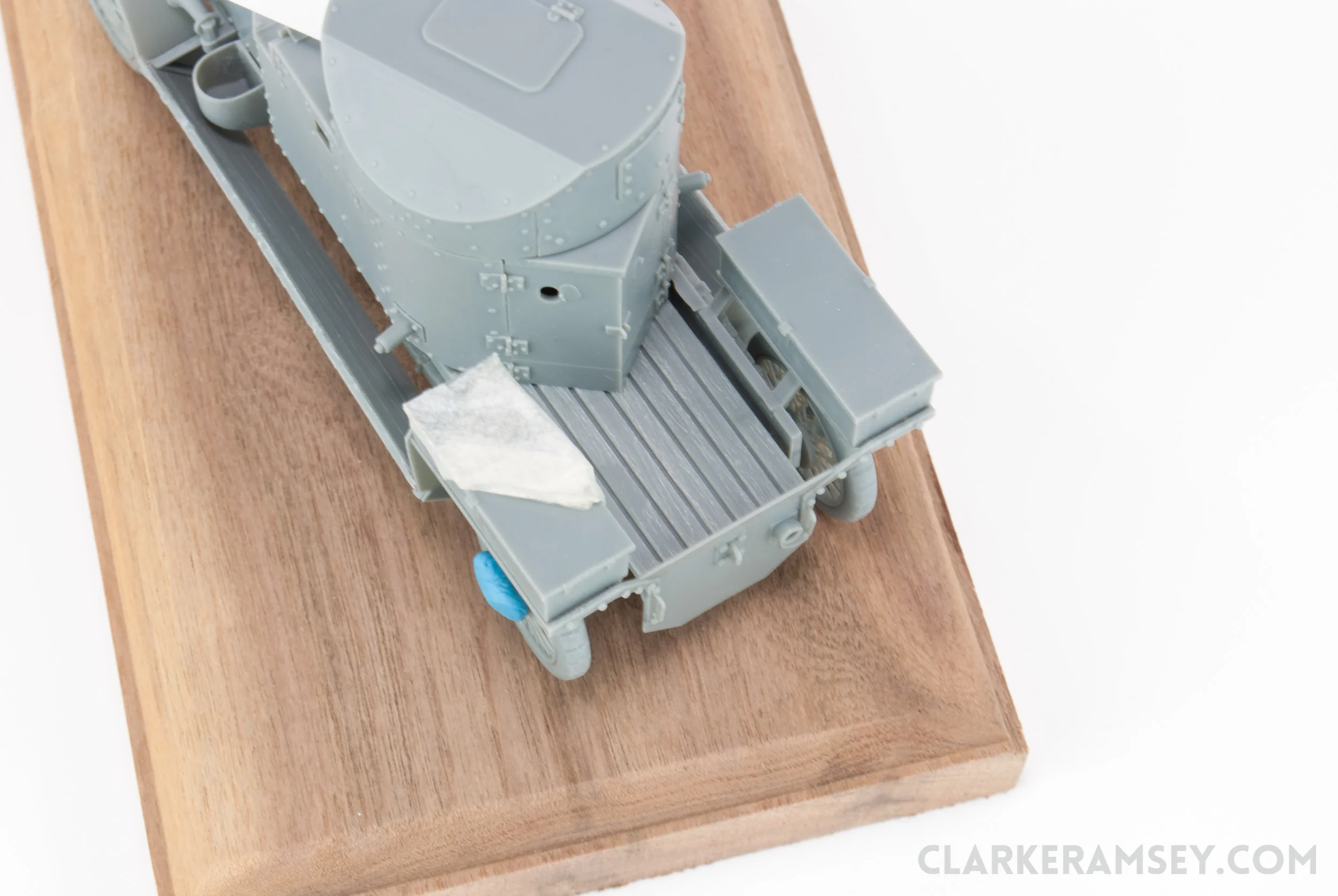The Lanchester 4×2 Armored Car
The Lanchester 4x2 was the second most numerous armoured car in service during WWI. Designed by the Admiralty Air Department for the Royal Naval Air Service, it was intended to support air bases and retrieve downed pilots.
The production version had a circular turret with a narrow horizontal roof, central hatch, steeply sloped at the sides, and continuous loped bonnet plating. This, together with a much more compact form than the earlier Rolls Royce Armoured Car, achieved by positioning the driver beside the engine (which featured an epicyclic gearbox), gives the Lancaster a deceptively modern appearance.
Thirty-six of the production version was sent to France in May 1915. One twelve-car RNAS squadron served with the Belgian Army. In addition, Belgium received between 10 and 15 cars on loan from the RNAS.
In 1915, all thirty-six RNAS armoured cars were passed to the British Army. Accordingly, all Lanchester armoured cars were returned to Britain. After being overhauled, in December 1915, 22 vehicles were supplied to the Imperial Russian Army. Of these, 19 were later rearmed with a 37-mm naval Hotchkiss gun in place of the standard Vickers machine gun. In January 1916 more Lanchesters arrived with the RNAS expeditionary force deployed in the Caucasus, Romania and Galicia in support of the Russians.
Operating in climates ranging from desert to near-Arctic conditions while serving in Russia, these cars covered over 53,000 miles. They were deployed in a manner that would become the standard for AFV warfare in the 20th Century. Acting as scouts and armed raiders, they operated well forward of the infantry following in their armoured trucks. When operating alongside the infantry they would act as fire-support vehicles. Their last operation was in support of the Brusilov Offensive in mid-1917.
With the outbreak of the Bolshevik Revolution, the RNAS armoured car division was withdrawn back to Britain, while Lanchesters still in Russian hands were used by the White Russian forces. During most of its service life, the Lanchester was considered an admirably fast and reliable vehicle.
This is my first time ever hearing about Copper State Models. It will not be my last. Their range of products is geared toward World War I. A subject that I know little about and continue to learn about in these past several months.
With 138 parts in very crispy clean grey plastic, a small sheet of decals for a total of five marking options and an AMAZING 18-page instruction booklet. The kit comes with a nice box top cover with some nice artwork on it.
The surface texture is fantastic with a very effective rendition of raised rivets that are proportional to scale.
The hull and turret are made up of separate panels - sides, front, rear and several upper panels for the hull, and four side pieces and a roof for the turret. You'll want to test fit and carefully align these important elements before committing to glue.
The running gear is quite well detailed. The front axle assembly appears to be designed for the front wheels to be possed straight ahead, although the separate axle ends might be modified to permit the wheels to be offset. The top turret hatch is moulded shut, but the side hatch is a separate part. There is no interior though, so most will glue it shut. The wheels are cleverly moulded plastic parts with fine spokes moulded as one with the tyre on one side, and a separate set of spokes for the opposite side.
Five marking options are provided, I will be choosing one of the two R.N.A.S. vehicles, in Admiralty Grey. Just a side note. There are no painting callouts in the instruction booklet. To be quite honest there really is no need for them. Not too much to see other than your base colour and the red light at the rear of the vehicle.
They've also decided to not include an interior. I would have like to see on for the price of the kit and as well as some details in photo-etch. A small but nice detail for kit makers to provide. Furthermore, they did not include clear lenses for the headlamps. The body and the "cap" for the else are moulded separately though. I'll be using my chrome pen and some clear plastic to depict the missing.
Overall a great kit that just about took me a weekend to construct.
I've added some additional details after doing a bit of research on my electric internet machine. A grappling hook (made from tubing, chain and copper wire), tarp (tissue paper/white glue) and some miscellaneous tools from my parts bins.























